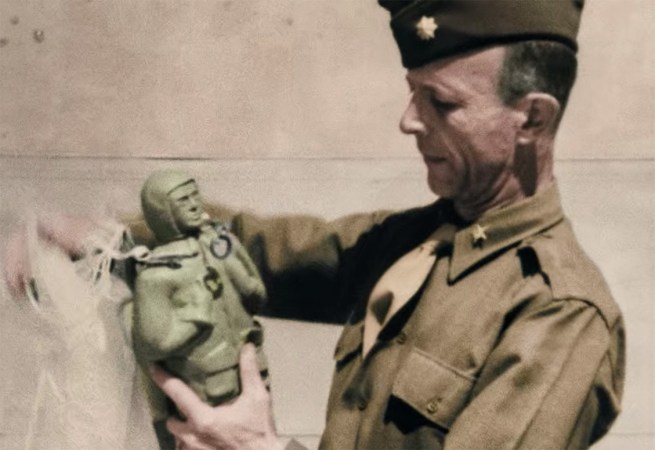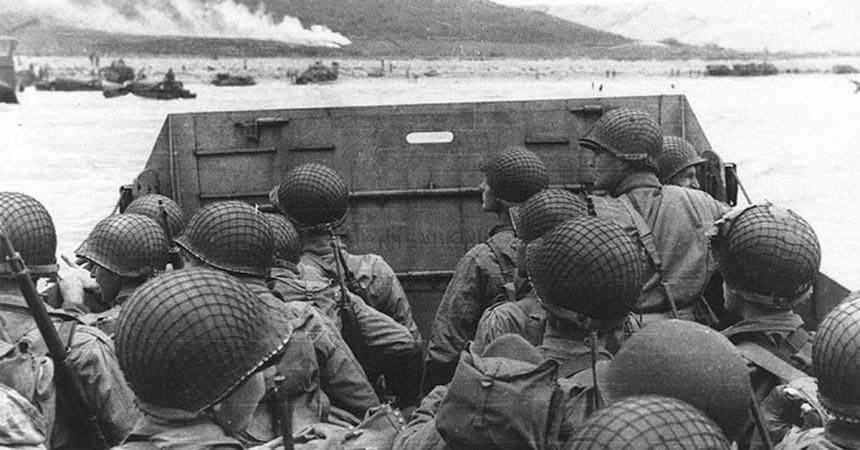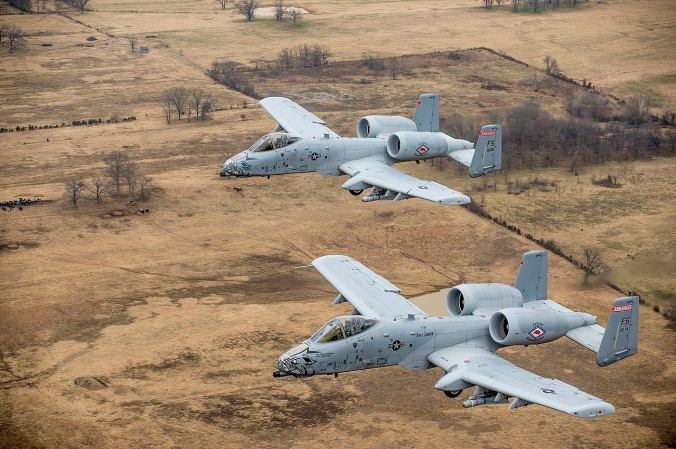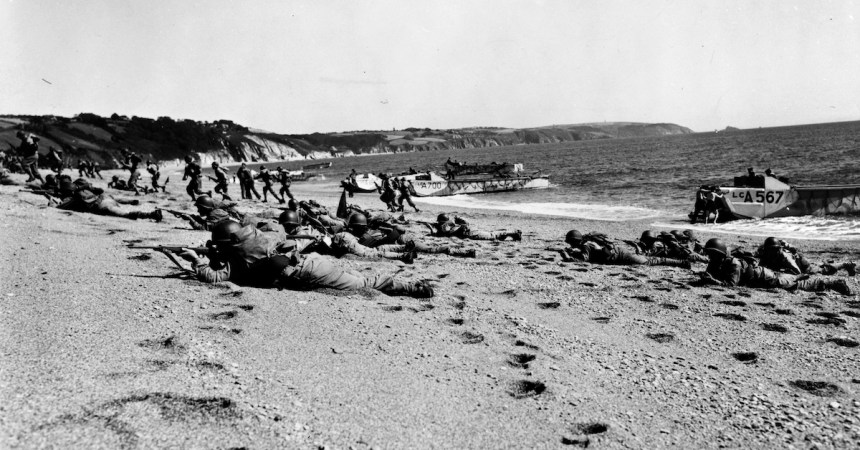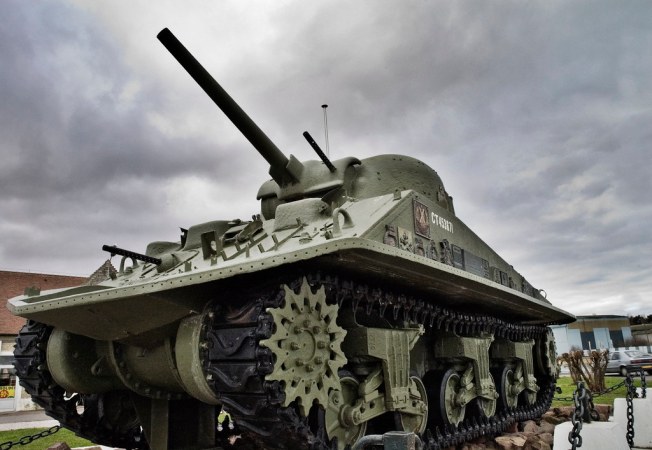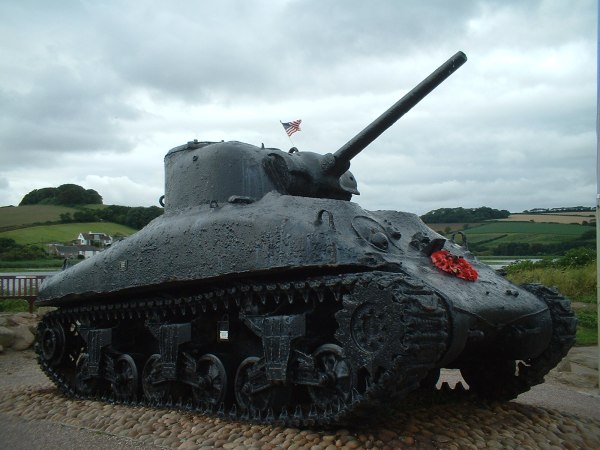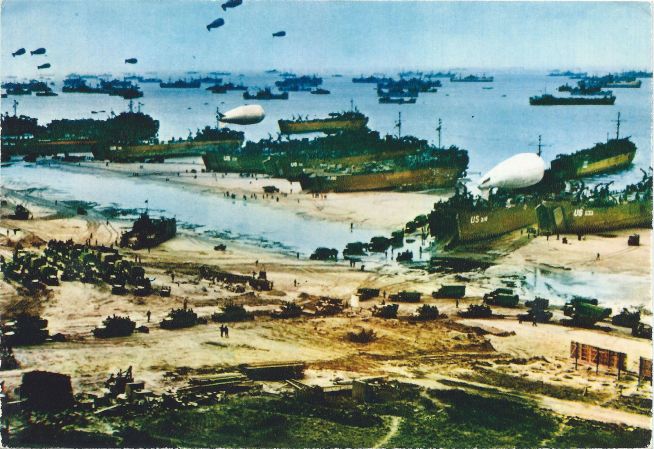With more than 6,000 ships and 150,000 troops involved, along with nearly 12,000 aircraft, D-Day stands as the largest amphibious assault in history. The Allies pulled together every resource available to breach Hitler’s Fortress in Europe, but they had to do so without America’s experts in amphibious warfare. The U.S. Marine Corps was busy pushing back the Japanese in the Pacific, island by island. Here’s how Eisenhower and his generals did it.
Planning for D-Day pits allies against each other

The demands of D-Day caused fights for resources. The Americans and British fought over when to make Normandy the priority while the Army was pitted against the Navy for resources, according to historical essays from “Command Decisions.”
The stress between the American and British leadership centered on an American belief that the British wanted to spend more time consolidating gains in the Mediterranean rather than pivot to France and open the new front in the war. The Americans thought that British leadership wanted to spend more time in Southern Europe to gain political power there, while British planners thought the focus should remain in the area a little longer to force Germany to move more reinforcements away from Normandy.
For the Army and Navy, the fight was over how shipbuilding assets should be used. The Army wanted more landing craft while the Navy needed shipbuilders focused on repairing and rebuilding the deepwater fleet that had been diminished by Pearl Harbor, submarine warfare, and escort duties for convoys.
Both problems were settled at the Cairo-Tehran conferences in 1943. British leaders assured the U.S. that they were committed to crossing the English Channel in 1944. The issue of new landing craft was settled due to two factors. First, the Navy had reduced need for new ships as German submarines were sinking fewer craft. Second, Churchill decried the shortage of landing craft, pledging his country would focus on constructing ships for the landing if the Americans would increase their effort as well.
Heavy German defenses force the Allies to do the unexpected

The obvious points for an Allied force to invade Normandy in the 1940s were the large port at Pas-de-Calais or the smaller ports at La Havre and Cherbourg. German defense planners reinforced these zones to the point that invaders would either fail to reach the beaches or be immediately pushed back upon landing. Instead, the Allies created a plan to land at a beach instead of a port.
The final plan was to land between Le Havre in the east and Cherbourg in the west. The invading forces would spread from there while airborne troops would jump ahead onto key objectives, securing bridges, destroying artillery, and wreaking havoc on the enemy communications. The plan faced numerous challenges, though two stood out.
First, German leadership knew of the Allies use of landing craft in Sicily and assessed the beaches as vulnerable, likely targets. Second, the Normandy coast was famous for bad weather and extreme tides, up to 21-foot changes in a day.
This would leave the Allies with relatively lightly-defended beaches, but a huge logistics problem once they had landed. Large ships would have no deepwater piers to pull up to and no cranes to remove supplies from cargo holds.
The Allies would ultimately get around this through the construction of “Mulberry Harbors,” prefabricated, floating piers protected by sunken World War I ships and caissons. The first piers were operational by June 14 and allowed vehicles and supplies up to 40 tons to drive from deepwater ships to the shore.
Weather delays D-Day but also saves it
The movement of supplies and soldiers to Britain had taken place over two years, culminating in a massive troop buildup in 1944. But the day of the invasion had to be set for small, three-day windows centered on proper tides and moonlight. Gen. Dwight D. Eisenhower, Supreme Commander of Allied Forces, set the invasion date for June 5, 1944 and trusted British Capt. James Stagg to make the weather decision for proposed invasion dates.
Stagg and the British meteorologists found themselves in disagreement with the Americans as to the weather for June 5. Stagg recommended delaying the invasion due to storms the British predicted, while the Americans thought a high pressure wedge would stave off the storms and provide blue skies. Luckily, Eisenhower only heard directly from Stagg and accepted his recommendation. D-Day was pushed to June 6.
The Germans, meanwhile, also predicted the storms but thought they would last for at least a week or more. With this weather forecast, the German high command went ahead with war games and pulled its troops away from the coastal defenses so they could practice defending the coasts. The head of German land defenses, Gen. Erwin Rommel, left to give his wife a pair of birthday shoes. The beaches would be more lightly defended and lack key leadership when the Allies arrived.
June 6, 1944: D-Day
Though the weather wouldn’t clear for hours, Stagg recommended to Eisenhower that he go ahead with the June 6 invasion. Just after midnight, the invasion of Hitler’s Fortress Europe began.
Prior to the beach landings, 23,000 American, British, and Canadian paratroopers dropped through heavy cloud cover to begin securing what would become the flanks of the main force at the beaches. They also struck at key logistics and communications hubs, allowing for the eventual push from the beach while also weakening the Germans’ ability to organize their counter attacks. Allied bombers struck targets on the beaches, preparing the objectives for the main force.
The landings on the Normandy coast began at 6:30 a.m. with the 8th Regimental combat team under Brig. Gen. Theodore Roosevelt at Utah Beach. Soldiers at Utah experienced a successful, relatively light invasion. Over the next few hours, Allied troops were landing at Gold, Juno, Sword, and Omaha Beaches.
At Omaha, bombing and naval fire had been relatively ineffective and many floating tanks were sunk due to the weather. Troops landed at heavily defended beaches where engineers had trouble clearing obstacles. The first wave took cover behind enemy anti-ship defenses and was bogged down. Follow-on troops helped assault the enemy defenses, climbing cliffs under fire to reach objectives. All four Medal of Honor awardees from D-Day fought on Omaha Beach.

“As our boat touched sand and the ramp went down, I became a visitor to hell,” said Pvt. Charles Neighbor, a veteran of Omaha Beach. By nightfall, the other four beaches were held with forces pushing between two and four miles inland. At Omaha, Allied soldiers continued to fight against pockets of resistance.
D-Day cost the lives of 4,413 Allied soldiers and between 4,000 and 9,000 Germans. The remaining pockets of resistance on Omaha Beach were conquered on June 7, and the Allies began the long push to Berlin. The War in Europe would rage for nearly another year before Victory in Europe Day, May 8, 1945.




